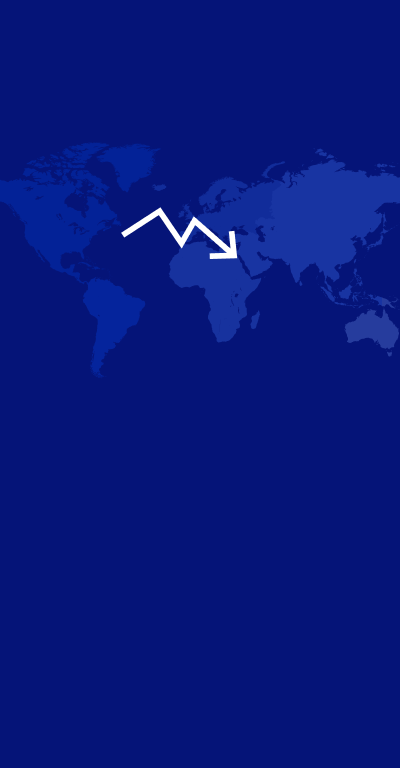
April market performance: will the freeze-dance continue or has the music stopped?
Søren Otto Simonsen
Senior Investment Editor
The US market drove the main part of the negative performance in equities, falling 4.2%. In an earnings season that’s otherwise going reasonably well, the US market positions towards fewer rate cuts – if any – as higher rates mean tougher requirements on business financing.
Europe fell 1.4% in April as investor sentiment took a turn for the worse. Some of that may be attributed to the higher-for-longer rate expectations, supported by e.g., steadily high inflation figures and increasing GDP figures. As a region, the earnings season in Europe has also not been as strong as in the US, which may have pulled down the index too – something that could improve going into May.
Asia fell 1.5% for the month, mainly due to negative performance in Japan, which makes up almost 35% of the index. But both Japan and China have been in focus with discussions of potential interventions in both countries' currencies. The Japanese stock market has had a tough month with a lot of volatility surrounding the yen, meaning that the Nikkei closes at almost -4% for the month. China, on the other hand, has enjoyed increased positive sentiment. As such, the Chinese Hang Seng index is up more than 7% for the month, leading to emerging markets’ positive performance of 0.3% as the only region in green.
Only two sectors posted green numbers for April – utilities (0.8%) and energy (0.3%). Utilities’ performance may be a combination of a company like Nextera Energy performing well and the sector’s stable nature making it less affected by higher for longer interest rates.
Real estate was the worst performing sector, falling by -7.3% due to its sensitivity towards interest rates. Information technology and consumer discretionary both fell 5% or more as the second and third worst performing sectors.
On an aggregate level, bond performance was negative in April, driven by the decreased interest rate expectations.
Sources: Bloomberg and Saxo
Global equities are measured using the MSCI World Index. Equity regions are measured using the S&P 500 (US) and the MSCI indices Europe, AC Asia Pacific, and EM, respectively. Equity sectors are measured using the MSCI World/Sector indices, e.g., MSCI World/Energy. Bonds are measured using the USD hedged Bloomberg Aggregate Total Return indices for total, sovereign, and corporate, respectively. Global commodities are measured using the Bloomberg Commodity Index. Oil is measured using the next consecutive month’s WTI (West Texas Intermediate) Crude oil futures contract (Generic 1st CL Future). Gold is measured using the gold spot dollar price per ounce. The US dollar currency spot is measured using the Dollar Index Spot, measuring it against a weighted basket of the following currencies: EUR, JPY (Japanese yen), GBP, CAD, SEK, and CHF. Unless otherwise specified, figures are in local currencies.



